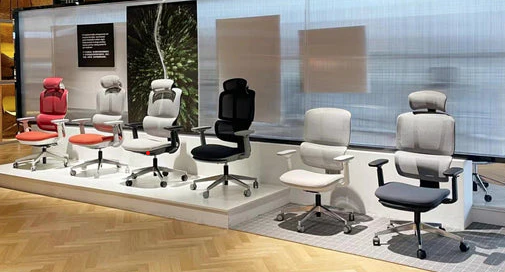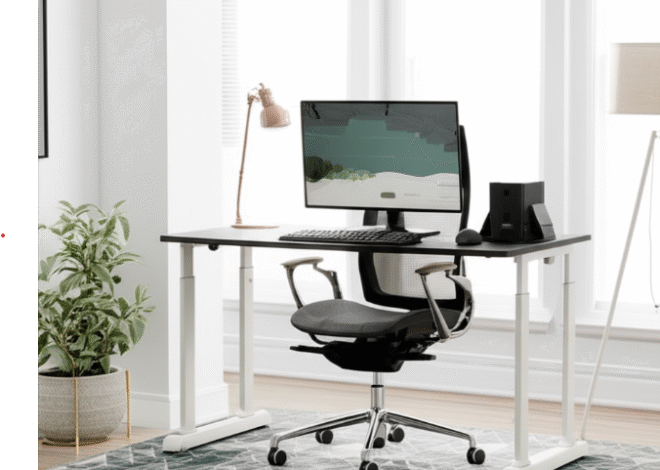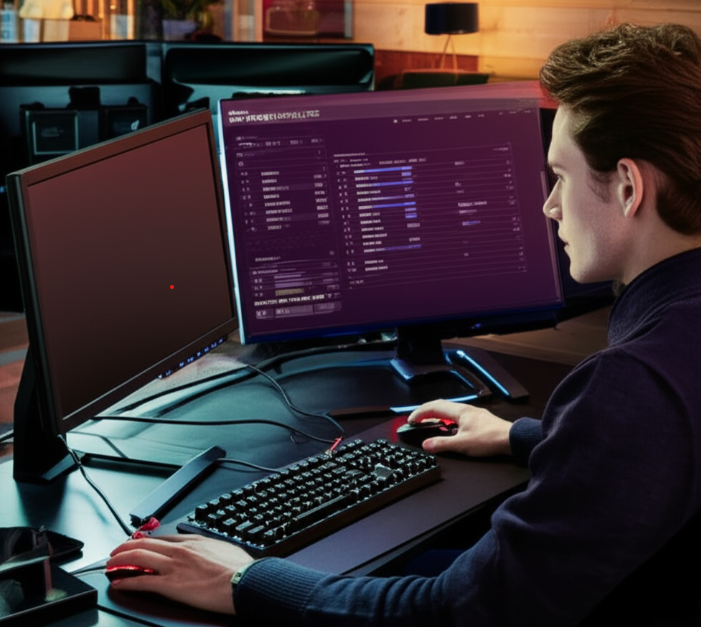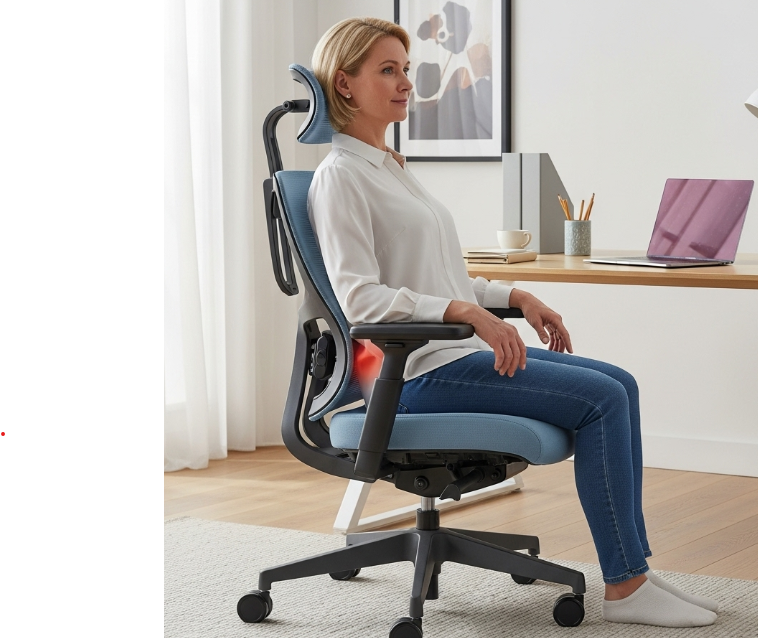
Finding the Best Chair for Back Pain Relief
😌 Say Goodbye to Aches: Finding the Best Chair for Back Pain Relief 🚀
Are you constantly battling a nagging backache, stiffness, or discomfort, especially after spending time in your chair? 😩 You’re not alone. Back pain is a widespread issue, and often, the culprit isn’t just poor posture or long hours, but the very chair you’re sitting on. Finding the best chair for back pain isn’t just about comfort; it’s about investing in a tool that actively supports your spine, alleviates pressure, and helps you reclaim your well-being.
This comprehensive guide is dedicated to helping you understand how a chair can impact your back health and, most importantly, how to choose the right one. We’ll delve into the science behind back pain and seating, highlight the crucial features that define the best chair for back pain, explore specific chair types, and provide a step-by-step process to find your ultimate relief. Let’s turn your pain into comfort! 👇
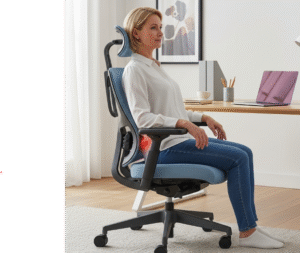
🧐 Why the Best Chair for Back Pain is a Non-Negotiable Investment
When you’re dealing with back pain, your chair isn’t just furniture; it’s a therapeutic device. Here’s why making the right choice is so vital:
- Targeted Pain Relief: 🩹 The primary goal! A chair designed for back pain directly addresses the root causes of discomfort by providing specific support to your lumbar spine, sacrum, and even your upper back, reducing pressure points and muscle strain.
- Corrects Posture Naturally: 🧘♀️ Many chairs force you into an unhealthy posture. The best chair for back pain guides your body into a neutral, ergonomic position, supporting the natural “S” curve of your spine and preventing slouching. This is key to long-term relief.
- Reduces Spinal Compression: Prolonged sitting puts immense pressure on your spinal discs. A good chair helps redistribute your weight evenly, reducing this compression and preventing further disc issues.
- Improves Blood Circulation: 🩸 Proper seating reduces pressure on your thighs and glutes, promoting healthy blood flow throughout your lower body, which is crucial for healing and preventing stiffness.
- Enhances Productivity and Focus: 🧠 When you’re not distracted by constant pain, you can concentrate better on your tasks. This directly translates to improved work quality and efficiency.
- Prevents Worsening Conditions: For those with existing conditions like sciatica, herniated discs, or scoliosis, the right chair is critical to prevent exacerbating the pain and can even aid in recovery.
- Long-Term Health & Mobility: 💪 Consistently using a supportive chair can prevent chronic musculoskeletal disorders, keeping you more mobile and active for years to come.
🛠️ Key Features: What Makes the Best Chair for Back Pain Truly Effective?
Not all “ergonomic” chairs are created equal when it comes to back pain. Here are the most critical features to look for:
1. Superior & Highly Adjustable Lumbar Support 🧘♀️
This is the cornerstone of any chair designed for back pain relief.
- Adjustable Height: The lumbar support must be able to move up and down to perfectly align with the natural curve of your lower back. Everyone’s spine is different!
- Adjustable Depth/Firmness: Some chairs allow you to adjust how far the lumbar support pushes into your back, and even its firmness. This micro-adjustment is crucial for personalized comfort and effective support.
- Dynamic Support: The best chairs for back pain offer lumbar support that flexes and moves with you as you shift postures, maintaining continuous contact and support.
2. Comprehensive Backrest Design 🔄
Beyond just lumbar, the entire backrest plays a role:
- High Backrest: It should extend high enough to support your entire back, including your upper back and shoulders, especially if you tend to lean back.
- Recline with Tilt Lock & Tension Control: ↩️ Reclining helps shift pressure off your lower spine. The chair should allow for a smooth recline with a tilt lock to fix it at various angles, and tension control to adjust the resistance to your body weight.
- S-Curve Design: The backrest should ideally mimic the natural “S” curve of the human spine, providing support where you need it most.
3. Seat Pan Quality & Adjustability 📏
The seat profoundly impacts your lower back and legs:
- Seat Depth Adjustment: This is vital! You should be able to slide the seat forward or backward so that there’s a 2-4 inch gap between the front edge of the seat and the back of your knees when your feet are flat on the floor. This prevents pressure on your circulation and allows your back to fully rest against the backrest.
- Waterfall Edge: The front edge of the seat should gently slope downwards (“waterfall edge”) to reduce pressure on your thighs and improve blood circulation.
- Padding & Material: Look for high-density, cold-cured foam that provides firm, supportive cushioning without flattening out quickly. Breathable materials like mesh or good quality fabric are often preferred over PU leather for long periods.
4. Armrest Adjustments (Multi-Directional) ↕️↔️
While not directly for back pain, proper arm support prevents shoulder and neck strain, which can exacerbate back pain.
- Height, Depth, Pivot (3D or 4D): Armrests should adjust so your arms can rest at a comfortable 90-degree angle, keeping your shoulders relaxed. This reduces the load on your upper back and neck.
5. Headrest/Neck Support (Adjustable) 💆♀️
Especially beneficial if your back pain extends to your upper back or neck, or if you recline frequently.
- Adjustable Height & Angle: Allows you to position it perfectly to support the curve of your neck, reducing strain.
6. Robust Build Quality & Durability 💪
A chair for back pain is an investment in your health, so it needs to withstand daily use.
- Strong Frame: A steel or aluminum frame is crucial for stability and long-term durability.
- High-Quality Gas Lift: A Class 4 gas lift is standard for safety and supporting a wide range of user weights.
- Weight Capacity: Always check to ensure the chair safely supports your weight.
- Warranty: A long warranty (5-10+ years) signals the manufacturer’s confidence in the product’s ability to provide lasting support.
🛋️ Types of Chairs: Which One is the Best for Your Back Pain?
When specifically targeting back pain, certain types of chairs stand out due to their design principles and adjustability.
1. High-End Ergonomic Office Chairs 📈 (Top Recommendation for Daily Use)
- What they are: These are premium chairs meticulously engineered for optimal spinal health. They feature extensive adjustability in every possible aspect: seat height, depth, lumbar support (often multi-dimensional), armrests, recline, and tension.
- Pros: Unparalleled support for the entire spine, promotes correct posture, highly customizable, built for long hours, durable.
- Cons: Can be very expensive.
- Best for: Anyone suffering from chronic back pain, those who spend 6+ hours daily sitting, or individuals seeking the absolute best in long-term spinal health support. Examples: Herman Miller Aeron, Steelcase Leap, Humanscale Freedom.
2. Specialized Lumbar Support Chairs 🧘♀️ (Focused Relief)
- What they are: Chairs that place a particular emphasis on advanced, often integrated, lumbar support systems that go beyond a simple knob. These might include dynamic lumbar systems that flex with your movement or highly adjustable pressure points.
- Pros: Direct, effective relief for lower back pain, often very comfortable for extended periods.
- Cons: May sometimes lack the overall adjustability of a fully high-end ergonomic chair in other areas, or specific features might not suit everyone.
- Best for: Individuals whose primary issue is persistent lower back pain or those with diagnosed lumbar conditions. Example: Razer Iskur (with its built-in lumbar curve), some specific ergonomic chair models.
3. Kneeling Chairs 🦵 (Alternative Posture, Use with Caution)
- What they are: These chairs shift your body weight, opening the hip angle and reducing direct pressure on the lower spine by distributing weight between your glutes and shins.
- Pros: Can provide temporary relief for some forms of lower back pain by changing spinal alignment. Encourages core engagement.
- Cons: Not suitable for everyone or for very long periods. Can put pressure on shins/knees. Lacks a full backrest for support.
- Best for: Short intervals, as an alternative to a traditional chair, or for specific conditions under the guidance of a medical professional. Not a standalone solution for all-day use.
4. Big & Tall Ergonomic Chairs 💪 (For Larger Users)
- What they are: Ergonomic chairs built with reinforced frames, higher weight capacities, and wider/deeper seats and backrests to comfortably and safely accommodate larger individuals.
- Pros: Provides appropriate support and durability for heavier or taller users who may not fit standard chairs.
- Cons: Can be more expensive, and options might be slightly more limited than standard sizes.
- Best for: Individuals whose height or weight falls outside the average range for standard chairs, ensuring proper ergonomic fit and safety.
5. Gaming Chairs with Advanced Ergonomics 🎮 (A Hybrid Option)
- What they are: While many gaming chairs are more about style, certain premium models have begun to incorporate sophisticated ergonomic features, including integrated, adjustable lumbar support and high-density foam.
- Pros: Combines gaming aesthetic with better ergonomic support than average gaming chairs. Good for gamers who also work from their chair.
- Cons: Still may not match the comprehensive adjustability of the absolute top-tier office ergonomic chairs.
- Best for: Gamers who need significant back support for long sessions and prefer the gaming chair aesthetic, or those who use their chair for both gaming and work. Example: Secretlab TITAN Evo.
💡 Finding YOUR Best Chair for Back Pain: A Step-by-Step Prescription
Choosing the best chair for back pain is a highly personal journey. Follow these steps to make an informed decision:
Step 1: Understand Your Back Pain & Body Type 🎯
- Identify the Type of Pain: Is it lower back, upper back, neck, or radiating pain (like sciatica)? This will guide your focus on specific chair features (e.g., strong lumbar for lower back pain, good headrest for neck pain).
- Consult a Professional: If your back pain is severe, persistent, or worsening, always consult a doctor, physical therapist, or chiropractor first. They can diagnose the issue and provide specific recommendations for posture and support, which you can then apply to your chair search.
- Measure Yourself: Know your height, weight, and the length of your legs (from behind the knee to the floor). This helps you check against chair specifications for proper fit.
Step 2: Set a Realistic Budget 💰 (An Investment in Health)
While it’s tempting to go cheap, remember that effective back pain relief is priceless. Quality chairs designed for back health are an investment.
- Budget-Friendly ($200-$400): You might find decent options with basic lumbar support and adjustability. Look for chairs with good reviews specifically for back comfort.
- Mid-Range ($400-$800): This range offers a significant leap in quality, adjustability (especially for lumbar), and durability. Many great chairs that genuinely help back pain fall into this category.
- High-End ($800+): These are the premium, medical-grade chairs that offer the most advanced ergonomic features, superior materials, and exceptional customization for the most effective back pain relief. If your pain is chronic, this investment is often worth it.
Step 3: Prioritize Key Ergonomic Features for YOUR Pain ⚙️
Based on your pain type and a professional’s advice, make a list of non-negotiable features. For back pain, highly adjustable lumbar support, seat depth adjustment, and a strong, high backrest are usually paramount.
Step 4: Focus on Materials & Breathability ✨
Consider materials that will keep you comfortable during long hours, especially if sweating exacerbates your discomfort. Mesh and quality fabrics are often preferred for breathability over synthetic leathers.
Step 5: Read Specialized Reviews & User Testimonials 💬
- Look for reviews specifically mentioning back pain relief: Search for “chair for sciatica review,” “best office chair for lower back pain,” etc.
- Consult ergonomic resource sites: Websites and blogs dedicated to ergonomics often provide detailed analyses of chairs from a health perspective.
- Pay attention to user stories: Read what other individuals with similar back issues say about specific chairs.
Step 6: Test Drive the Chair (CRITICAL!) 🧑🔬
If at all possible, try the chair before buying. This step is non-negotiable when dealing with back pain.
- Spend Time in It: Don’t just sit for a minute. Sit for 15-20 minutes, adjust everything, try different postures, and see how your back feels.
- Assess Lumbar Support: Can you feel the lumbar support hitting the right spot in your lower back? Can you adjust it to provide the right amount of pressure?
- Check Seat Depth: Can you get the 2-4 inch gap between the seat edge and your knees while your back is fully against the backrest?
- Feel the Overall Support: Does the chair feel stable and supportive in all positions?
Step 7: Confirm Warranty & Return Policy 📦
A good warranty (5+ years, ideally 10+) is essential. Also, ensure the retailer has a generous return policy, preferably allowing you to try the chair for a few weeks to truly assess its impact on your back pain in your own workspace.
🏆 Top Contenders: Chairs Often Recommended for Back Pain Relief
While individual results vary, these chairs are frequently praised by users and ergonomic experts for their ability to provide significant back pain relief:
1. Herman Miller Aeron / Embody 🌟 (Premium Spinal Health)
- Why it’s great: Considered leaders in ergonomic design. The Aeron offers exceptional spinal support with its PostureFit SL system and breathable Pellicle mesh. The Embody is specifically designed to support the spine’s natural curvature dynamically, flexing and adapting to your movements.
- Best for: Individuals with chronic or severe back pain who need the absolute best in spinal support and are willing to invest.
- Considerations: Very high price point, but a long-term investment.
2. Steelcase Leap / Gesture 🚀 (Dynamic & Comprehensive Support)
- Why it’s great: The Leap features “LiveBack” technology that mimics your spine’s movement, providing continuous support. The Gesture excels in supporting various postures and technology use, crucial for those who shift often. Both offer extensive, precise adjustments, including excellent lumbar support.
- Best for: Those who need dynamic back support, move frequently while sitting, or have pain stemming from prolonged static posture. Excellent for various body types.
- Considerations: Also a premium price, but top-tier performance.
3. Humanscale Freedom 🧘♀️ (Intuitive & Adaptive)
- Why it’s great: Designed for simplicity and natural movement. Its unique weight-sensitive recline mechanism automatically adjusts to your body, and the pivoting backrest and strong lumbar support adapt as you move.
- Best for: Users who prefer intuitive adjustments and a chair that automatically adapts to their posture without needing to tinker with many levers. Great for those looking for proactive back support.
- Considerations: Less manual adjustability than some others, which might not suit those who want granular control.
4. Secretlab TITAN Evo (Series 2022) 🎮 (Gaming Chair with Serious Back Support)
- Why it’s great: While a gaming chair, it stands out for its integrated, fully adjustable lumbar support system (internal knob) that is genuinely effective. Its firm, cold-cured foam provides excellent support, and the magnetic head pillow is superior to many.
- Best for: Gamers or those who prefer the racing-style aesthetic but need serious ergonomic backing for their pain. Good for users who also spend long hours working.
- Considerations: Still carries a gaming aesthetic, which might not fit all office environments.
5. Ergonomic Chairs with Advanced Lumbar (e.g., Sihoo M90D, Flexispot Ergonomic Chair) 💰
- Why it’s great: Many mid-range ergonomic chairs are now incorporating more sophisticated adjustable lumbar support systems. While not as refined as the premium brands, they offer significant improvement over basic chairs at a more accessible price point.
- Best for: Individuals on a tighter budget who still need effective, adjustable lumbar support and core ergonomic features.
- Considerations: Quality of materials and overall durability might not match the high-end options, but they offer good value for money.
🧑💻 Ergonomics 101: Setting Up Your Chair for Back Pain Relief
Getting the best chair for back pain is only half the battle. Proper setup of your entire workstation is paramount for maximizing relief and preventing further issues.
- Chair Height is Key: 📏 Adjust your chair so your feet are flat on the floor (or a footrest). Your knees should be at a 90-degree angle, or slightly lower than your hips if that feels more comfortable for your lower back (an open hip angle can reduce lumbar pressure).
- Lumbar Support Placement: 🧘♀️ Position the lumbar support so it fits snugly into the natural inward curve of your lower back, just above your belt line. It should feel supportive, not uncomfortably pushing you forward.
- Seat Depth (Crucial for Back): Adjust the seat depth so you can sit fully back against the backrest with a 2-4 inch gap between the front edge of the seat and the back of your knees. This allows your entire back to be supported and prevents slouching.
- Monitor at Eye Level: 🖥️ The top of your monitor screen should be at or slightly below eye level. This prevents neck strain and upper back rounding.
- Armrest Support: 🤝 Adjust armrests so your forearms are parallel to the floor and your elbows are at about a 90-degree angle. This keeps your shoulders relaxed and reduces strain on your upper back and neck, which can contribute to lower back pain.
- Keyboard & Mouse Close: Keep your keyboard and mouse close to your body to avoid reaching. Your wrists should be straight.
- Take Regular Movement Breaks! 🚶♀️ Even with the perfect chair, static sitting is detrimental. Stand up, stretch, and walk around for 5-10 minutes every hour. Consider a standing desk to alternate between sitting and standing.
- Mindful Posture: Even in the best chair, be mindful of your posture. Engage your core slightly, avoid slouching, and redistribute your weight occasionally.
❓ FAQs About Finding the Best Chair for Back Pain
Here are some frequently asked questions about choosing the best chair for back pain:
Q1: Can any ergonomic chair help with back pain?
A: Not necessarily. While all ergonomic chairs offer better adjustability than standard chairs, the best chair for back pain will have superior and highly adjustable lumbar support, along with features like seat depth adjustment and a strong recline mechanism that specifically targets spinal alignment and pressure relief.
Q2: What’s the most important feature for back pain relief?
A: Highly adjustable lumbar support is arguably the most critical feature. It allows you to customize the chair to fit the unique curve of your lower back, providing targeted support where you need it most.
Q3: Should I get a chair with a headrest for back pain?
A: If your back pain extends to your upper back or neck, or if you frequently recline, an adjustable headrest is very beneficial. It helps support your neck and head, preventing strain that can cascade down to your back.
Q4: My doctor recommended a specific type of chair. Should I listen?
A: Absolutely! If a medical professional has recommended a specific type of chair or specific features based on your condition, prioritize their advice. They understand your unique needs.
Q5: Will a chair cure my back pain completely?
A: A high-quality chair can significantly reduce and prevent back pain, and it’s a crucial part of managing pain, but it’s rarely a complete “cure” on its own. It works best in conjunction with good posture habits, regular movement, proper stretching, and any medical treatments recommended by a doctor.
Q6: Is firmer or softer cushioning better for back pain?
A: Generally, firmer, high-density foam is better for back pain. It provides more consistent, supportive cushioning that holds its shape, whereas very soft chairs can allow you to sink in and slouch, negating ergonomic benefits.
🏁 Conclusion: Invest in Your Back, Invest in Yourself!
Living with back pain is debilitating, affecting every aspect of your life and work. Choosing the best chair for back pain is not merely a purchase; it’s a proactive step towards alleviating discomfort, improving your posture, and reclaiming your quality of life. By focusing on highly adjustable lumbar support, proper seat design, and robust construction, you can find a chair that truly makes a difference.
Don’t let back pain dictate your day. Empower yourself with the right tools, understand your body’s needs, and create a workspace that supports your well-being. Your back deserves the best, and with this guide, you’re now equipped to find it. Sit healthier, live better! ✨🚀
